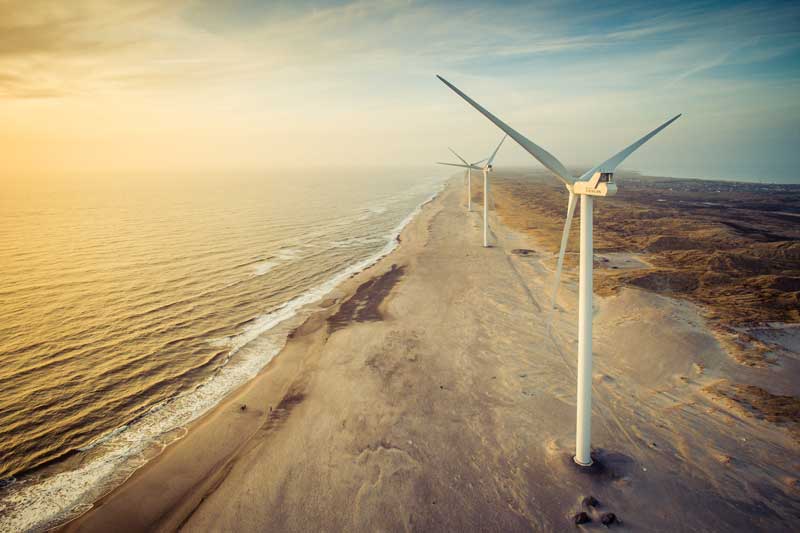Wind-powered farms serve as the United States’ most extensive renewable energy source, but typically, these are deep in the ocean and may even be out of sight for consumers.
To complement these farms, onshore wind farms may be making a resurgence in the coming years, meaning you’ll see them more by the side of the highway.
In 2022, of the total 900 GW of wind capacity installed, 93% was in onshore systems, with the remaining 7% in offshore wind farms, according to IEA.
From January to May of 2023, wind farms generated 12.4% of U.S. electricity. According to the Energy Information Administration, this nearly doubles the output of hydropower and more than triples that of utility-scale solar.
“The signs for long-term growth are mostly positive,” Ryan Wiser, a senior scientist at Lawrence Berkeley National Laboratory, told Inside Climate News.

Challenges and potential of onshore wind farms
The onshore market has seen wild ups and downs as developers have struggled to maximize tax credits. Developers often rush to build projects to meet credit deadlines, but the credits temporarily disappear until Congress approves an extension. In 2022, developers also struggled to get the parts needed.
Following two years of decline, onshore capacity is expected to rise 70% in 2023 to 107 GW, a record amount.
The Inflation Reduction Act was designed to provide some relief from these fluctuations, with a production tax credit that will have the same rate until a phasedown begins in 2033. The credit gives an owner 2.75 cents for every kilowatt-hour a project generates in its first ten years if it meets wages and benefits standards. This could unlock a whole new potential for more renewable energy.
Offshore wind farms make it easy to supply coastal customers. About 80% of the country’s electricity demand stems from the east and west coasts and the Great Lakes states. Offshore wind resources are located near these dense coastal populations, working well for the market and developers.
By expanding to onshore farms, more electricity can be supplied to more places without being limited by a coastline.
Government investment in onshore wind
The United States government started investing heavily in an onshore wind supply chain, deploying 30 GW of onshore wind. This will require more than 2,000 wind turbines and foundations, 6,800 miles of cable, and dozens of specialized vessels. In the first year following the passage of the Inflation Reduction Act, the domestic onshore wind industry invested $2.7 billion in ports, vessels, supply chain, and transmission, according to the Department of Energy.
Why onshore wind farms can help utility companies
Developers take on the lion’s share of the work and cost for onshore wind farms, reducing upfront burden and cost for utility companies. Another benefit is the wind farms serve as an additional clean energy source that provides extra relief to an aging grid.
Onshore wind farms also provide utility customers with discounted, cost-stable electricity. Onshore wind rates can be locked in for 20 years or more as a hedge against volatile fossil fuel prices. The right analytics solution can help companies decide the most cost-effective course of action as this trend continues to become a more realistic opportunity.
- 87% of Utilities Have Experienced at Least One Data Breach in Last Three Years - February 5, 2024
- Can Drones Lower Your Next Utility Bill? - January 10, 2024
- Onshore Wind Farms Are The Next Big Thing In Renewable Energy - December 6, 2023





